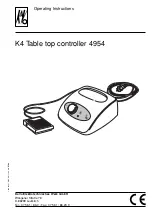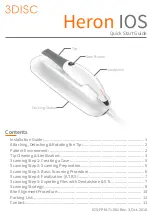
MB2000/3000/5000 OPERATING AND MAINTENANCE MANUAL
TAYLOR-WHARTON (BEIJING) CRYOGENIC EQUIPMENT CO., LTD.
5
SAFETY PRECAUTIONS FOR LIQUID NITROGEN
Nitrogen is an inert, colorless, odorless, and tasteless gas, which makes up four-fifths of the air you
breathe. Liquid nitrogen is obtained by cooling air until it becomes a liquid and then removing the oxygen,
which makes up the other fifth of the air. Liquid nitrogen is at a temperature of 320
℉
degrees below zero
Fahrenheit (-196
℃
) under normal atmospheric pressure.
Extreme Cold - Cover Eyes and Exposed Skin
Accidental contact of liquid nitrogen or cold issuing gas with the skin or eyes may cause a freezing injury
similar to frostbite. Handle the liquid so that it won't splash or spill. Protect your eyes and cover the skin
where the possibility of contact with the liquid, cold pipes and cold equipment, or the cold gas exists.
Safety goggles or a face shield should be worn if liquid ejection or splashing may occur or cold gas may
issue forcefully from equipment. Clean insulated gloves that can be easily removed and long sleeves are
recommended for arm protection. Cuffless trousers should be worn outside boots or over the shoes to
shed spilled liquid.
Keep Equipment Area Well Ventilated
Although nitrogen is non-toxic and non-flammable, it can cause asphyxiation in a confined area without
adequate ventilation. Any atmosphere, which does not contain enough oxygen for breathing, can cause
dizziness, unconsciousness, or even death. Nitrogen being colorless, odorless, and tasteless cannot be
detected by the human senses and will be inhaled normally as if it were air. Without adequate ventilation,
the expanding nitrogen will displace the normal air without warning that a non-life-supporting
atmosphere is present. Store liquid containers outdoors or in other well- ventilated areas.
Dispose of Waste Liquid Nitrogen Safely
Dispose of waste liquid nitrogen out-of-doors where its cold temperature cannot damage floors or
driveways and where it will evaporate rapidly. An outdoor pit filled with clean sand or gravel will
evaporate liquid nitrogen safely and quickly.
CAUTION: When installing field fabricated piping, make certain a suitable safety valve is
installed in each section of piping between shut-off valves.
For more detailed information concerning safety precautions and safe practices to be observed when
handling cryogenic liquids consult CGA pamphlet P-12 "Handling Cryogenic Liquids" available from the
Compressed Gas Association, 1235 Jefferson Davis Highway, Arlington, VA 22202.
NOTE:Argon is an inert gas whose physical properties are very similar to those of nitrogen. For
handling of liquid argon, follow the safe practices described for the handling and use of liquid
nitrogen.







































